After nearly two years of being confined to my bed, undergoing surgeries, and facing an unexpected reliance on pain medication, I felt like a shadow of my former self. The struggle to taper off the medication was grueling, and even as I began to heal physically, my own body felt unfamiliar. Sleep, once my refuge, became elusive. I could manage only a few hours each night, if I was lucky. The world outside my room seemed far away, like a place I no longer belonged to.
It was only after I packed my bags and left my routine recovery space that I finally began to breathe again. Traveling to the Peruvian Amazon felt like a desperate attempt to connect with the version of myself I feared might be lost forever. This trip wasn’t just a journey or a return to my work as a journalist; it was a quest for connection, the rediscovery of purpose, and a hope that in one of the world’s wildest environments, I might finally find peace.
A catamaran navigates through Tres Chimbadas Oxbow Lake in the Peruvian Amazon jungle, while squirrel monkeys curiously peer into the water. (Jenn Smith Nelson photo for VacayNetwork.com)
Just a few days later, I was swept away as our tour group glided along the Tambopata River in a slender, long canoe, heading toward the ecolodge Posada Amazonas, which is only reachable by boat. The sky was overcast, but the vibrant greenery of the jungle stood out starkly against the dull brown river, which flowed through the heart of the Amazon. The humidity-heavy air, accompanied by light, steady rain, enveloped me in a warm embrace, reminiscent of an old friend.
As we made our way, our guide, Rodolfo Pesha, treated us to snacks of cocona juice, Brazil nuts, and plantain chips. He outlined an exciting itinerary filled with cultural experiences, citizen science opportunities, and wildlife spotting. Nestled within the Ese Eja Native Community of Infierno and encompassing over 9,500 hectares of rainforest, the lodge operates in partnership with the Indigenous community’s elders and Rainforest Expeditions.
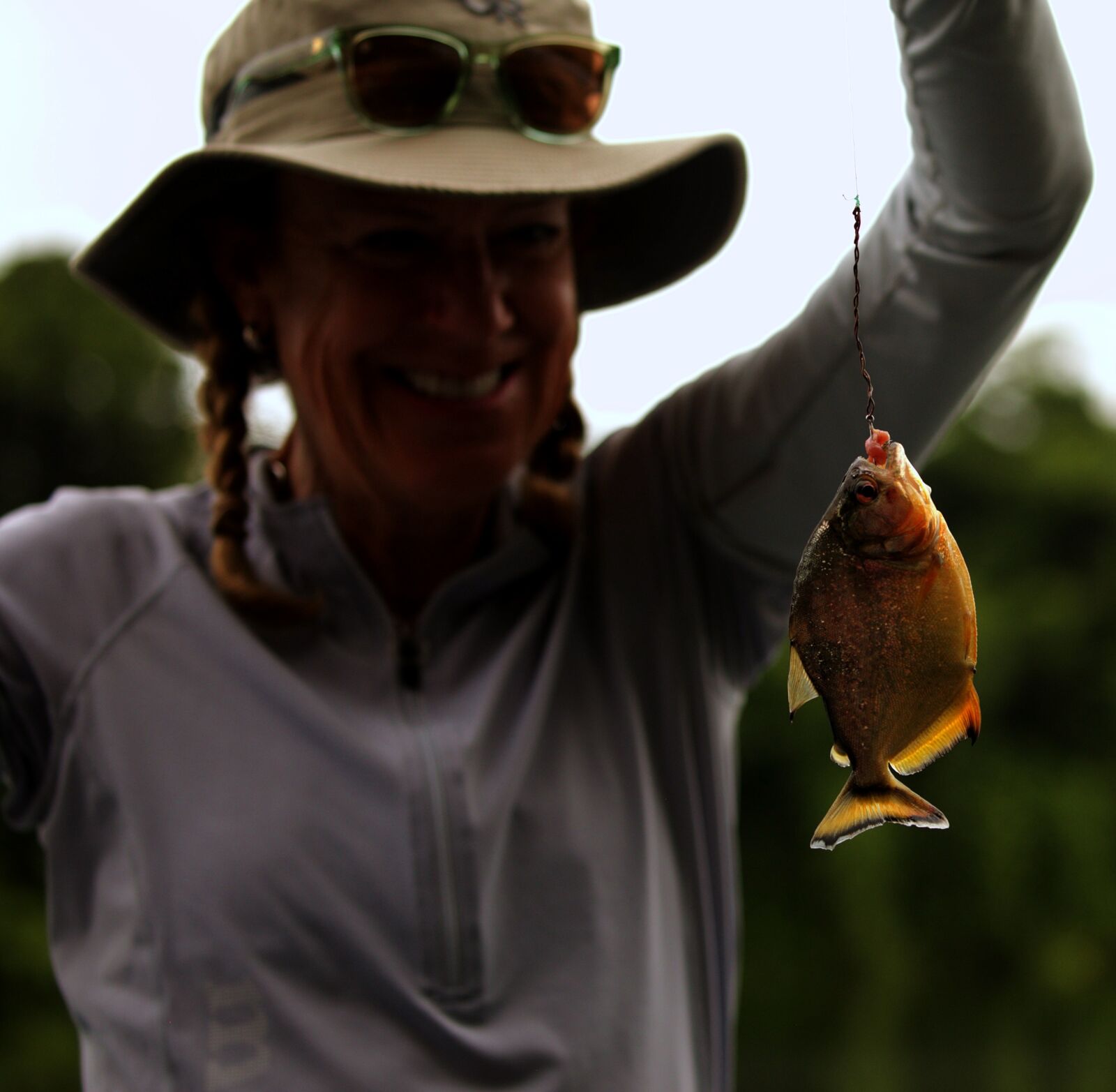
Guest Kathy Dragon reels in a yellow piranha during an adventure at Posada Amazonas. (Jenn Smith Nelson photo for VacayNetwork.com)
We disembarked and ascended a steep staircase leading to a narrow hexagonal stone path. As I followed the group like an ant marching in line, I felt as if I were failing a sobriety test, distracted by the feast of new sights and sounds surrounding me. Pesha identified a chorus of frogs, some croaking like goats while others sounded like car alarms. Mushrooms, resembling tiny umbrellas, sprouted from massive trees that shaded the pathway. After about ten minutes, we arrived at the stunning open-air lodge nestled deep within the forest. Taking a deep breath, I felt an unexpected sense of belonging wash over me.
The immersion into the jungle quickly followed with guide Oscar Mishaja leading us on a short hike to a 120-foot canopy tower that offered breathtaking views. As we strolled along the soft, terracotta-colored forest floor, bustling with fungi and moss, I learned about the remarkable biodiversity of the area, including how agouti play a crucial role in the nut dispersal cycle of Brazil nut trees. As we paused to admire a massive ironwood tree, I felt the distinct flutter of a hummingbird whisking past me.
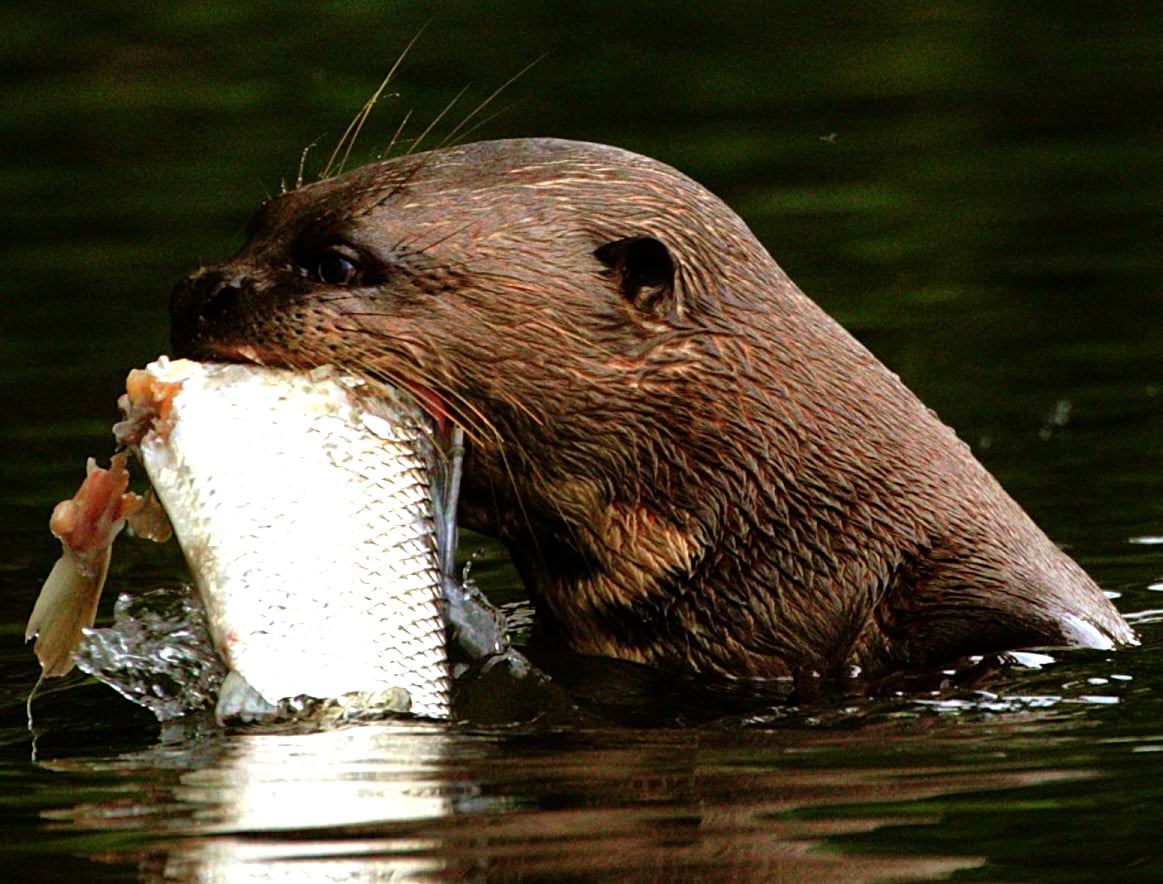
One of the rarest creatures in the Tambopata region, a female giant river otter, catches a meal in the Amazon. Approximately one in three guests at Posada Amazonas lodge will spot this five-foot-long otter. Wildlife viewing is a major attraction in the Peruvian jungle. (Jenn Smith Nelson photo for VacayNetwork.com)
We reached the top of the tower just as the sun was setting, marveling at the treetops bathed in golden light where macaws, toucans, and squirrel monkeys played among the vibrant green canopies, reminiscent of velvet crowns.
Feeling both invigorated and exhausted, I retreated to my cozy room, complete with a bed draped in a mosquito net and open-air walls. The scents of the forest filled the space as I settled in, listening to the symphony of frogs and nocturnal insects.
The morning came quickly, and as I walked through the lodge, an adorable agouti scampered across the grounds while howler monkeys roared in the distance. I spotted Pesha wearing a harpy eagle T-shirt that I immediately admired. A guide for 23 years, he was once again at the helm as we headed to Tres Chimbadas, an oxbow lake where seeing raptors is a distinct possibility.
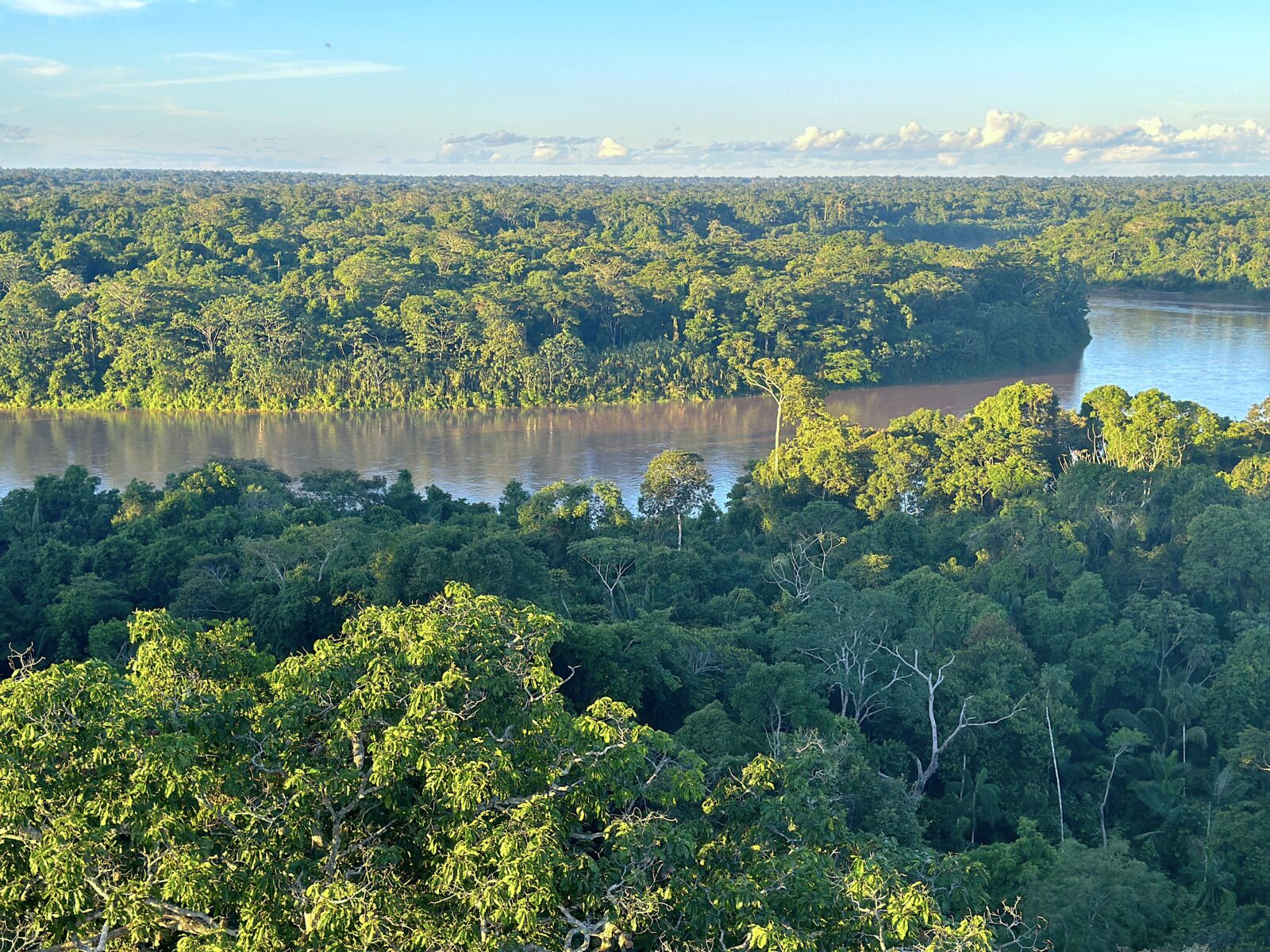
The breathtaking landscape of the Amazon is visible from atop a 120-foot canopy tower during a hike through the surrounding forests. (Jenn Smith Nelson photo for VacayNetwork.com)
“Kianamene peanaje kuana. Welcome to the rainforest,” Pesha welcomed us, one of the guardian elders dedicated to protecting this beautiful territory. We arrived at a small concession filled with fig trees, a land gifted by the Peruvian government to the Ese Eja community to manage. “This checkpoint must be crossed to protect the Amazon from unsustainable practices,” he explained.
The lake was calm and tranquil, encircled by verdant marshland drowned in the sounds of birds. At that moment, I couldn’t have felt more at peace. While I glimpsed several new birds, the playful antics of the squirrel and brown capuchin monkeys stole the spotlight. Swinging between trees and peering curiously at us, they flitted near the lake’s edge, enticing more avian visitors for my life list, including an Ani and colorful Hoatzins.
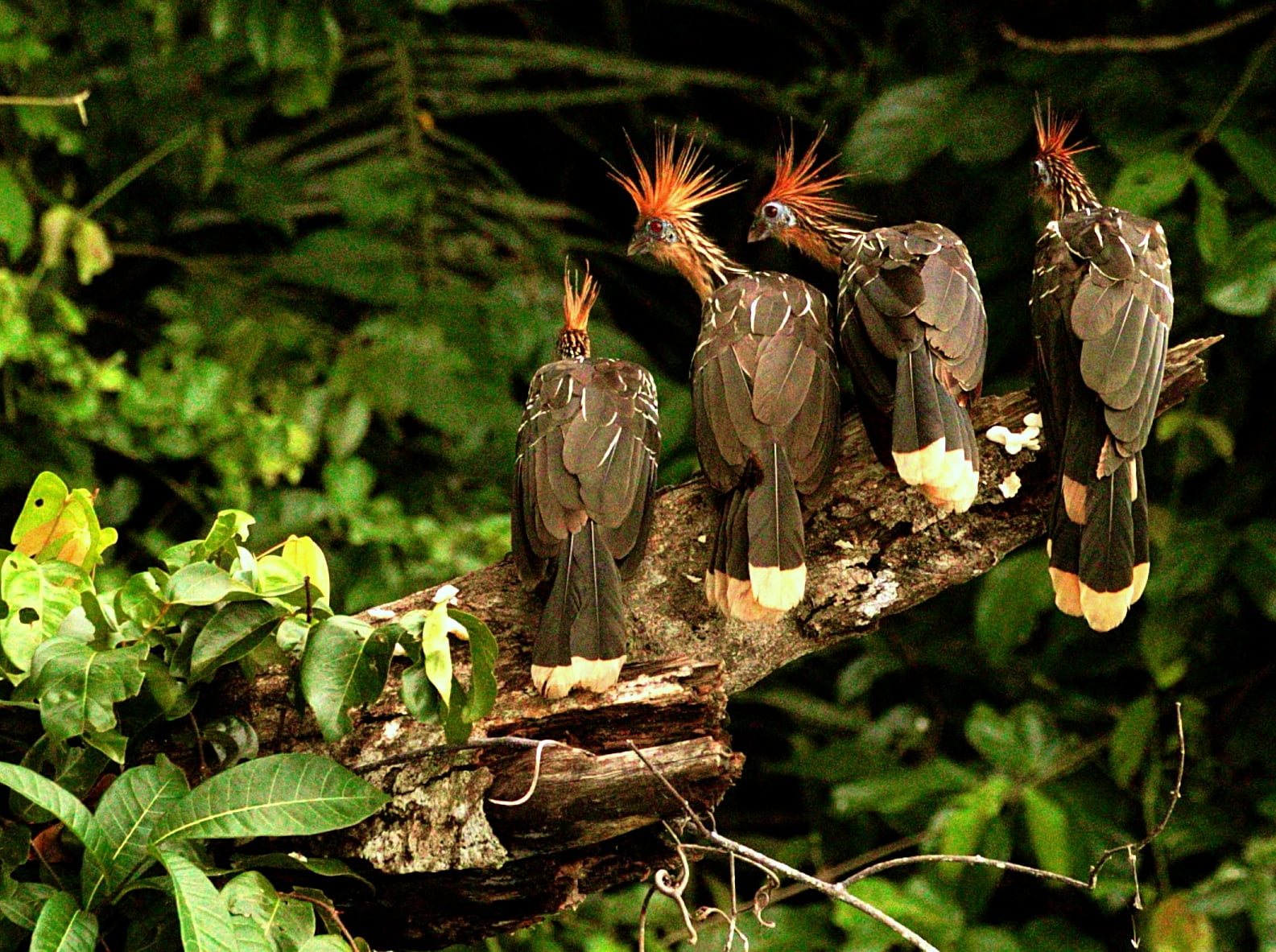
A group of Hoatzins appear to be gossiping as they settle on a branch along Tres Chimbadas lake in the Peruvian Amazon. (Jenn Smith Nelson photo for VacayNetwork.com)
“This is also an anaconda habitat,” Pesha shared. “They thrive in the water and prefer to feed in lakes. They can eat anything from capybaras to agoutis.” His captivating description captured my full attention as he elaborated on the Amazon’s other major predators, including giant river otters, black caimans, jaguars, and harpy eagles with claws the size of human fingers.
We stopped the catamaran to fish for piranha, using small bits of meat tied to sticks with tiny hooks. A toothy yellow fish quickly seized the bait, and guide Luis Maytahuari proudly held it up for us to have a close encounter with its razor-sharp teeth.
Back at the bow, I scanned the lake for the otter family, but instead caught sight of even more birds—no surprise, considering the area is home to approximately 610 species. Excited, I snapped pictures of Hoatzins hopping from branch to branch, cormorants drying their wings, and an ospreys gracefully soaring above. Pesha’s bird calls brought forth sightings of a Donacobius, a swallow-tailed kite, and the endemic red-throated caracara.
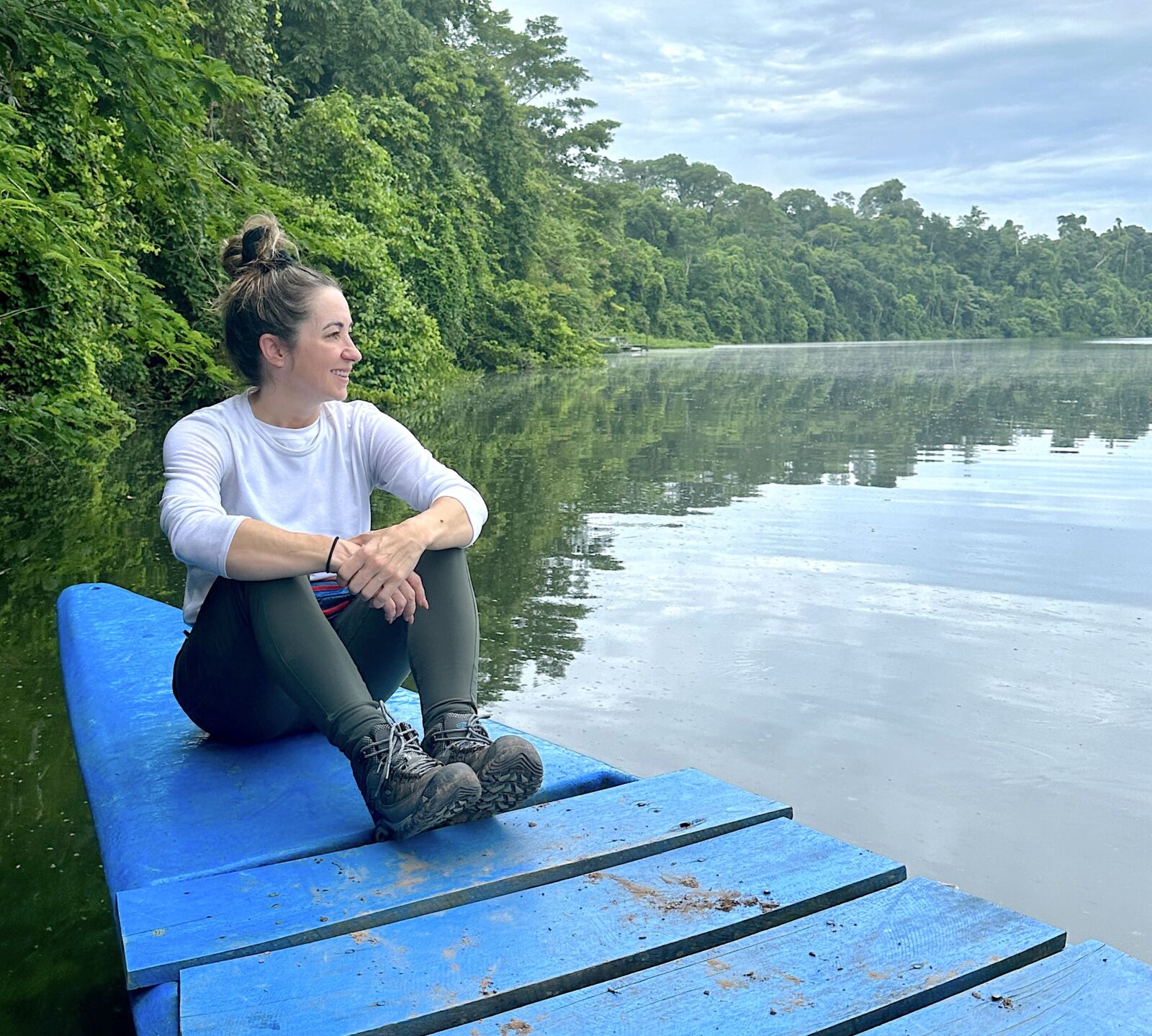
Author Jenn Smith Nelson finds her happy place, relaxing and soaking in the beauty of the Peruvian Amazon. (Photo provided by Jenn Smith Nelson)
The surrounding palms teemed with blue-and-yellow macaws and red-bellied scarlet macaws; however, Pesha warned that they could eventually overwhelm the marshland. The battle to grow, adapt, and reinvent wasn’t lost on me.
Though we didn’t spot the otters, on our way back we discovered a camouflaged black caiman lurking in the water near a tree and an emerald tree boa that resembled a cluster of bananas in the forest canopy. I quickly realized that there were likely eyes watching from every direction.
Returning to the lodge, I recharged with a local Peruvian margarita made from agave de los Andes and empacado, a traditional chicken dish wrapped in bijao leaves, stuffed into bamboo, and cooked over an open flame.
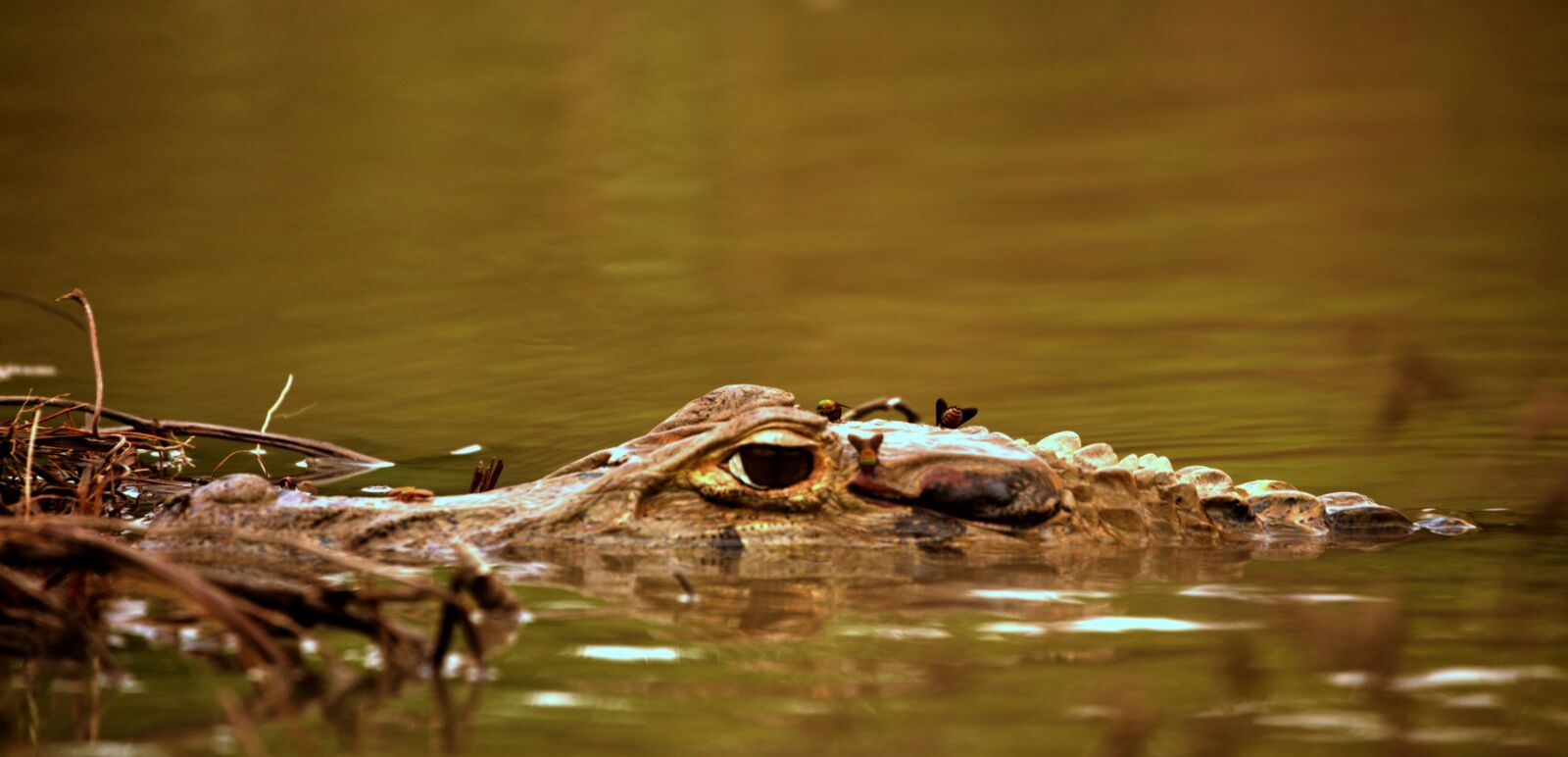
A wide-eyed black caiman, the largest member of the alligator family, remains motionless in the waters of the Amazon. (Jenn Smith Nelson photo for VacayNetwork.com)
My cultural immersion continued as we took a medicinal walk with Pesha through the community’s botanical garden. The Ese Eja still practice traditional medicine guided by three shamans, including Mishaja’s father.
We trekked along a path lined with medicinal plants used in shamanic remedies. First, Pesha introduced ayahuasca, a powerful brew used for spiritual and therapeutic purposes. He then explained how Chuchuhuasi bark is ground into powder and mixed with wild honey to help treat arthritis. We also learned about Sanipanga, a purple dye and wound healer, Una de Gato (or cat’s claw), famed for its ability to prevent ulcers, and Para Para, humorously dubbed nature’s Viagra.
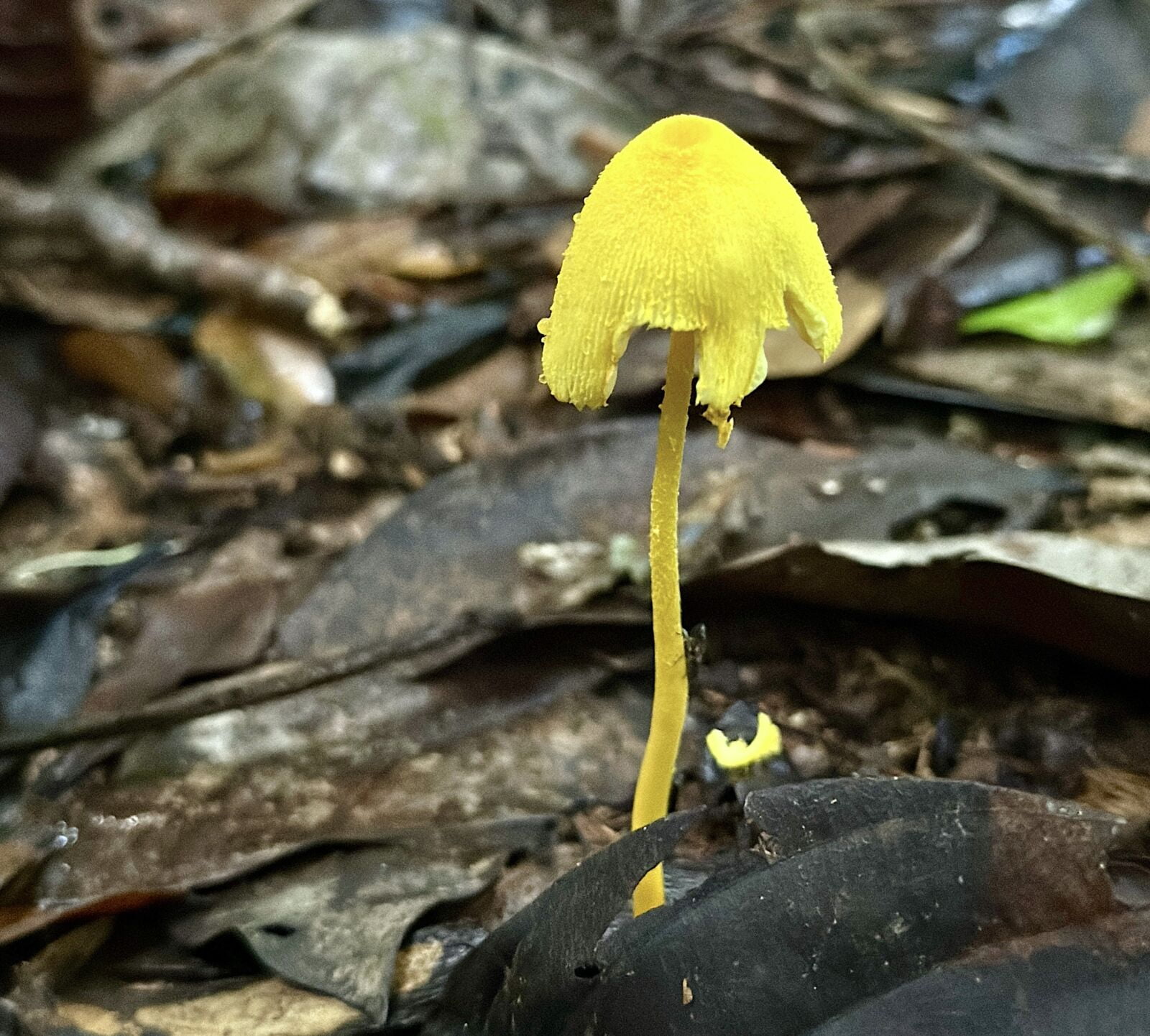
A vibrant wild mushroom among the spectacular flora found in the jungles of Peru’s Amazon. (Jenn Smith Nelson photo for VacayNetwork.com)
I first met Aracely Yarasca when she hosted a presentation on the collection of tiger moths. As part of Wired Amazon’s citizen science programs led by Rainforest Expeditions, guests can contribute to conservation efforts in the rainforest. Participants can earn naming rights for any new species of tiger moth discovered through the program, which has already identified 22 new species over the past six years.
Following Yarasca down a dimly lit forest trail, I repeated a mantra to myself: “Keep breathing. Remember, they don’t sting. They’re just evening butterflies.” As someone who has always been wary of stinging insects, the vast array of Amazonian bugs intimidated me.
“If you see something blinking, it’s probably a spider,” she advised. Adjusting my eyes, I was horrified to find the ground illuminated by dozens of eight-legged creatures. I paused and called out, prompting an inspection of the closest spider—a wolf spider. Despite my apprehension, I pressed on. The path buzzed with life, including hundreds of leaf-cutter ants marching by and a tiny golden frog perched on a leaf.
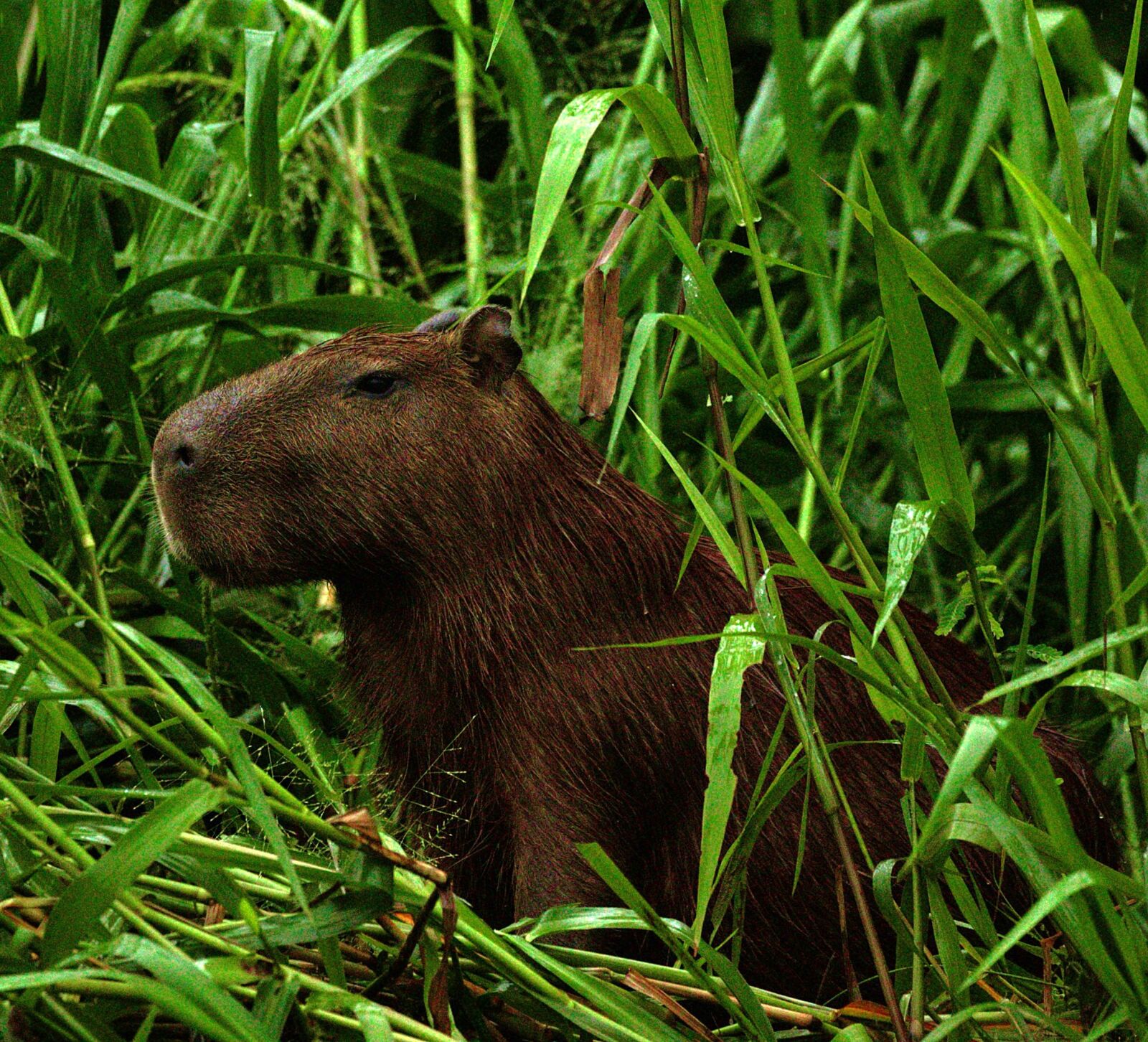
The world’s largest rodent, a capybara, photographed during a tour with Rainforest Expeditions, stands alert amid the tall grass. (Jenn Smith Nelson photo for VacayNetwork.com)
Soon after, we arrived at a large white sheet illuminated by a light box, which was crawling with insects, mostly moths swarming around my head. Yarasca pointed out that the insects were less active with the full moon but asked me to turn off my headlamp to avoid attracting more of them.
Feeling anxious, I began to sweat as I sensed more bugs landing on me. It felt as if my long-sleeve white shirt was attracting the flying creatures. Nevertheless, these delicate beings were breathtaking, with intricate designs on their wings that seemed like masterpieces crafted by a skilled artist. I relaxed, carefully selecting eight or so tiger moths and gently plucking them off me to drop them into a collection jar, all while hoping for the best.
On our return, we spotted a large Neotropical spider feasting on a moth. I couldn’t help but feel for the moth; mere minutes earlier, I had been admiring its beauty. Yarasca explained how the spider mummified its prey by wrapping it in silk and extracting nutrients, a process vital for new silk production. Ah, the circle of life.
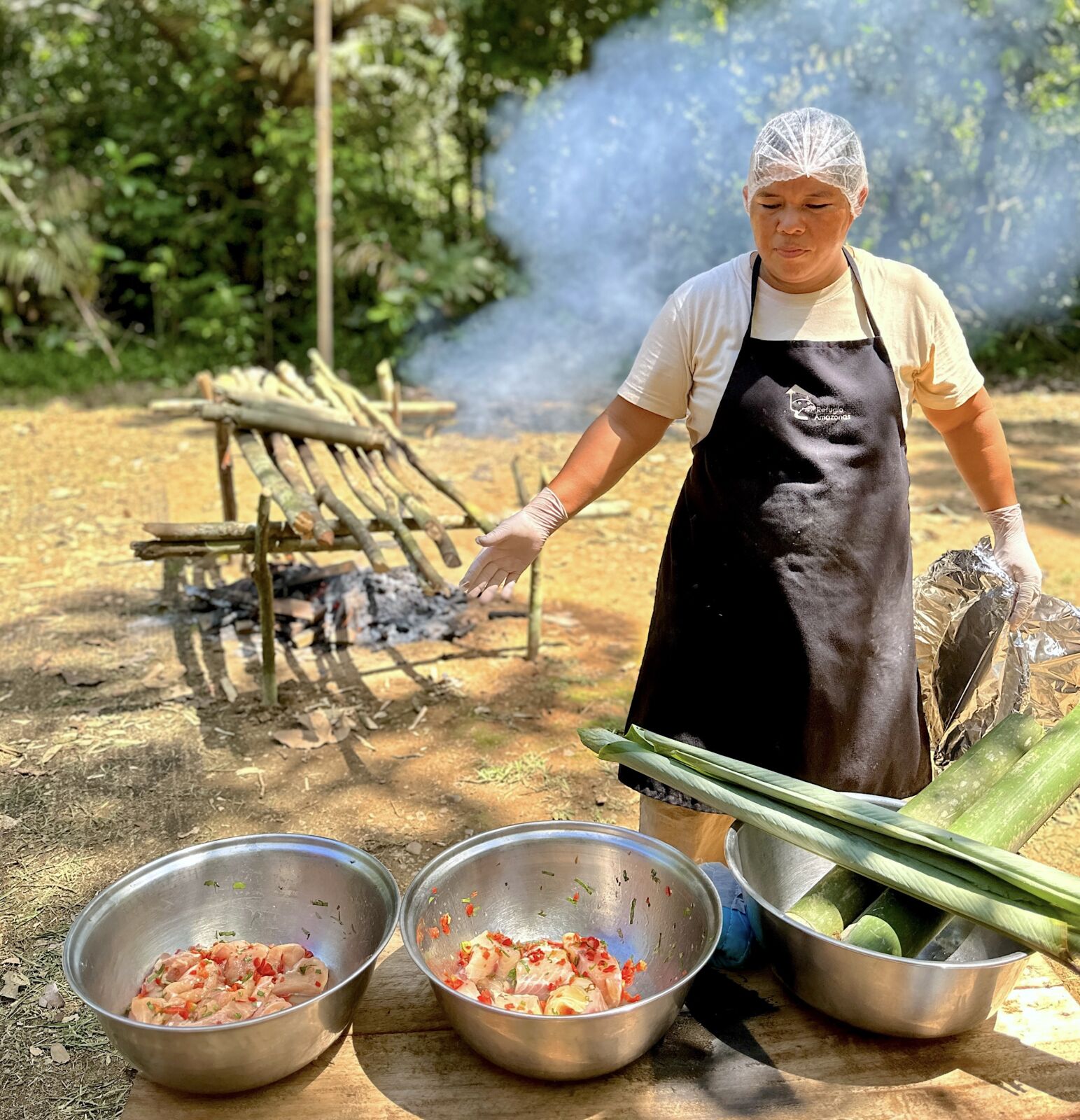
Daniela Pesha prepares empacado, an authentic Peruvian dish, for guests at Posada Amazonas eco-lodge. (Jenn Smith Nelson photo for VacayNetwork.com)
Yarasca shared that of all the species on our planet, insects remain the least understood, and the Amazon serves as a land of discovery, housing the highest number of undiscovered species. The Tambopata rainforest is one of the best environments worldwide to unearth these secrets.
The following morning, I was given another chance to return to the oxbow lake with guide Fernando Coa, where we hoped to spot the elusive otters. Coa, who declared the ornate hawk-eagle as his favorite bird, has extensive tourism experience, including a wildlife guiding career that began in 2006.
Once we reached the lake, he energetically identified bird calls, his excitement contagious. “That horned screamer sounds like a donkey,” he exclaimed with a grin. “Do you hear that barking to the right, Jenn? It’s a white-throated toucan; it sounds just like a puppy!” As a devoted bird enthusiast, I felt ecstatic amidst the calls, sights, and sounds of the vibrant environment.
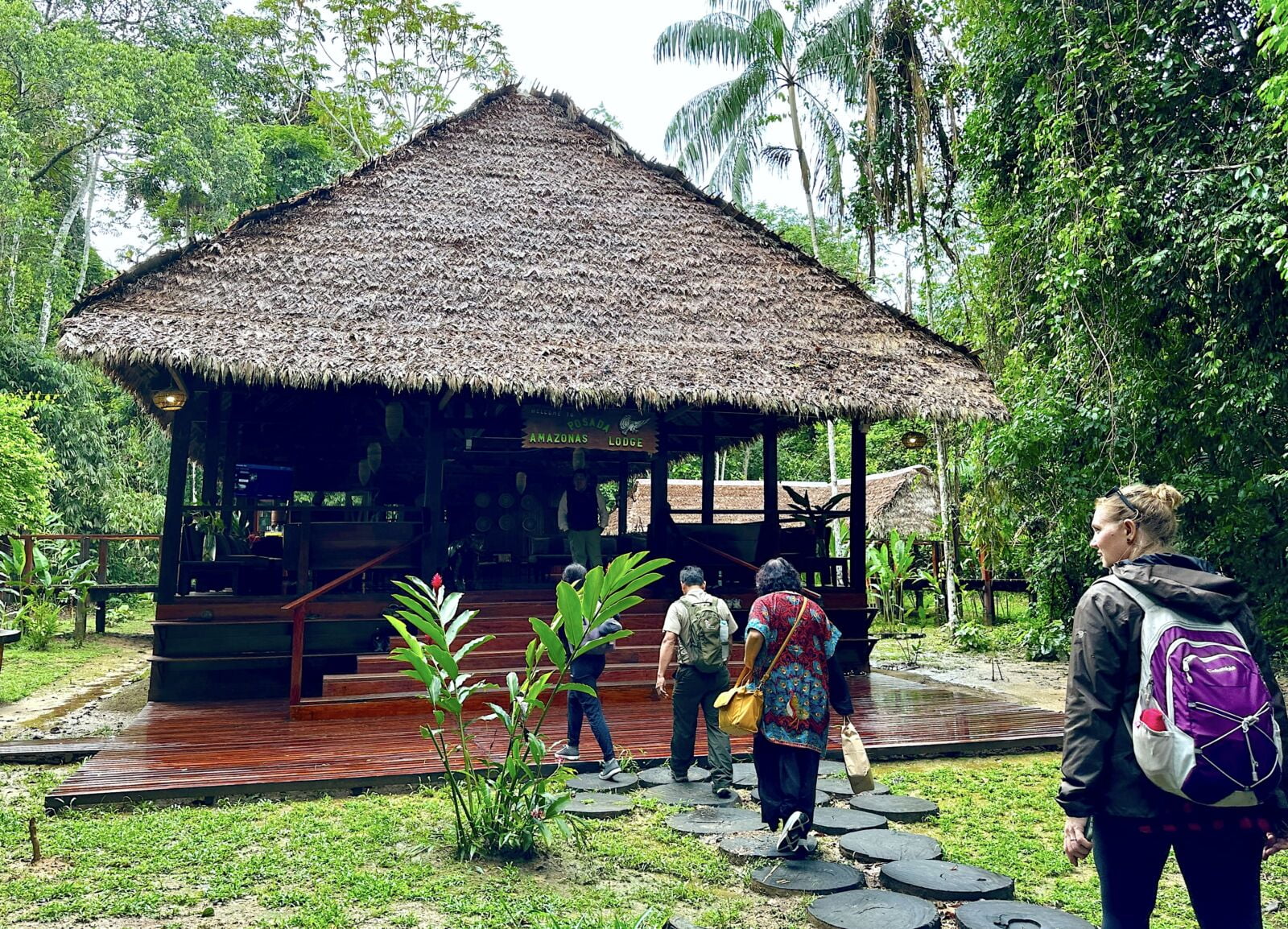
Adventurous guests arrive at the Posada Amazonas lodge, located in a remote region of Peru along the Tambopata River, only accessible by boat. (Jenn Smith Nelson photo for VacayNetwork.com)
Squirrel monkeys reappeared, munching on gaga beans and insects. At two o’clock from our boat’s bow, Coa noticed a catamaran tracking the otters. We waited anxiously as they drew nearer, spotting a cattle egret to the left and horned screamers perched in the right canopy.
“It’s getting closer! It’s coming! Jenn, here it comes!” Coa exclaimed excitedly. I scanned the waves, and suddenly the otters appeared, heads bobbing as they approached the boat. They were so close that my wide-angle camera lens couldn’t keep up.
A dominant female led her family, proudly displaying her catch—an impressive mouthful of fish. We watched an entertaining scene unfold as the otters engaged in playful antics, their barks and cries echoing as they each tried to snatch bites, resembling eager siblings fighting over the biggest slice of birthday cake.
Overjoyed, we exchanged smiles and high-fives; it was a moment that made the trip. On our return journey, I learned that otters possess distinctive throat patterns and are endangered in Peru, with only about 400 remaining, and just five in the area I visited.
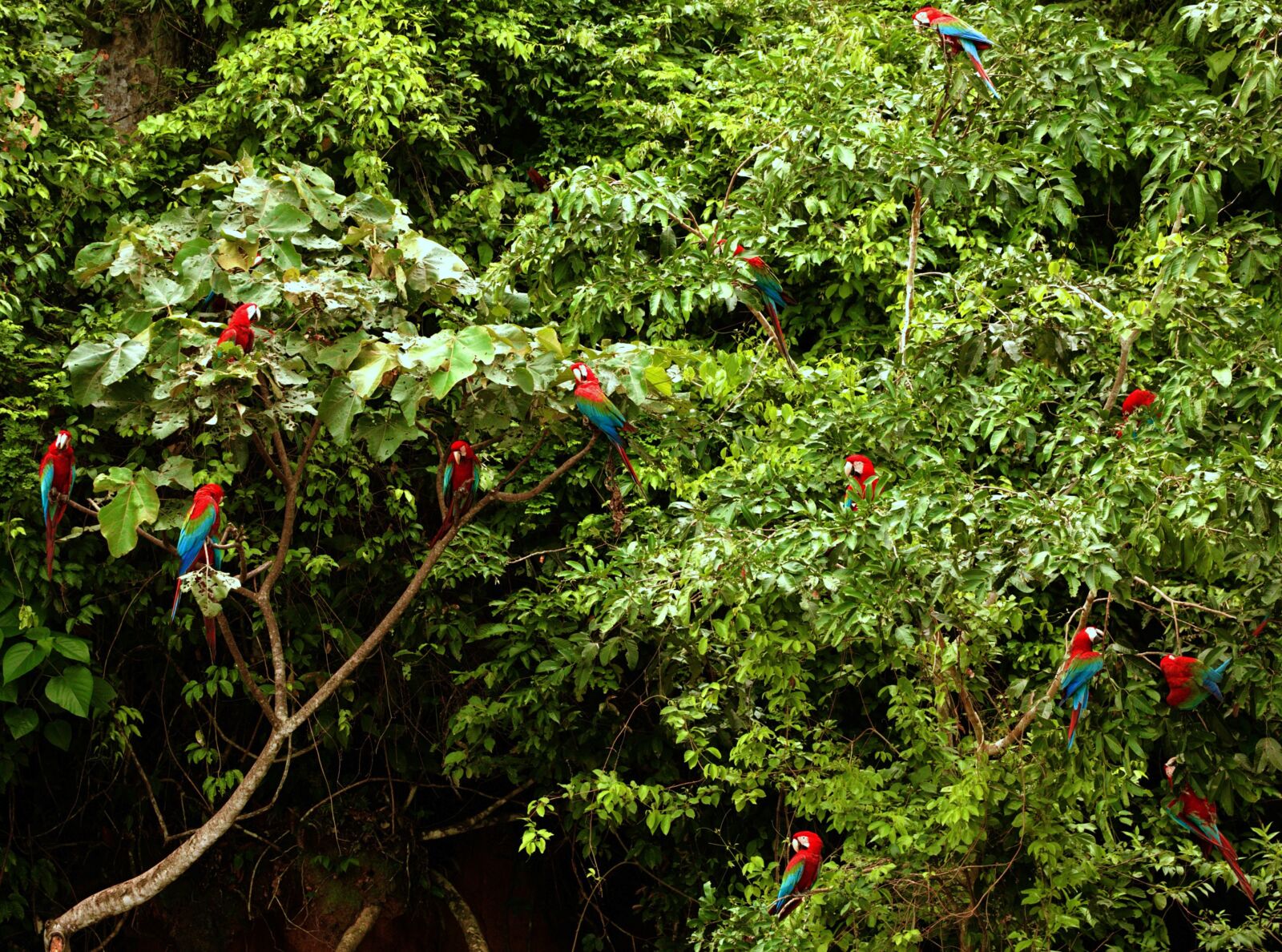
The striking plumage of scarlet macaws captivates as they perch in the trees of the Peruvian Amazon. (Jenn Smith Nelson photo for VacayNetwork.com)
With toucans croaking and howler monkeys roaring, I savored the joy of that moment, feeling profoundly thankful to be immersed in the heart of the Amazon. I cherished every minute learning from the Ese Eja through meaningful cultural experiences. “It was a great day,” Coa declared. “It was special for me too; you rarely see them up close while eating.”
Yet, the greatest gift this journey offered was the ability to sleep. In the tranquility of the rainforest, lulled by the faint sounds of distant howler monkeys and the chirping of frogs, I discovered a sense of peace. For the first time in years, I slept deeply and soundly, awakening refreshed and whole, aware that I had rediscovered myself. The sleeplessness and physical pain that burdened me for years faded, replaced by a new sense of alertness and relief, as the Amazon performed its gentle, healing magic on my body despite my initial skepticism.
It struck me as ironic; I found myself in the Amazon, a place in dire need of our protection. Yet, it was the Amazon—its forests, wildlife, and people—that healed me and helped me learn how to sleep again.
It seems, indeed, that nature is the best medicine.
MORE ABOUT VISITING THE PERUVIAN AMAZON
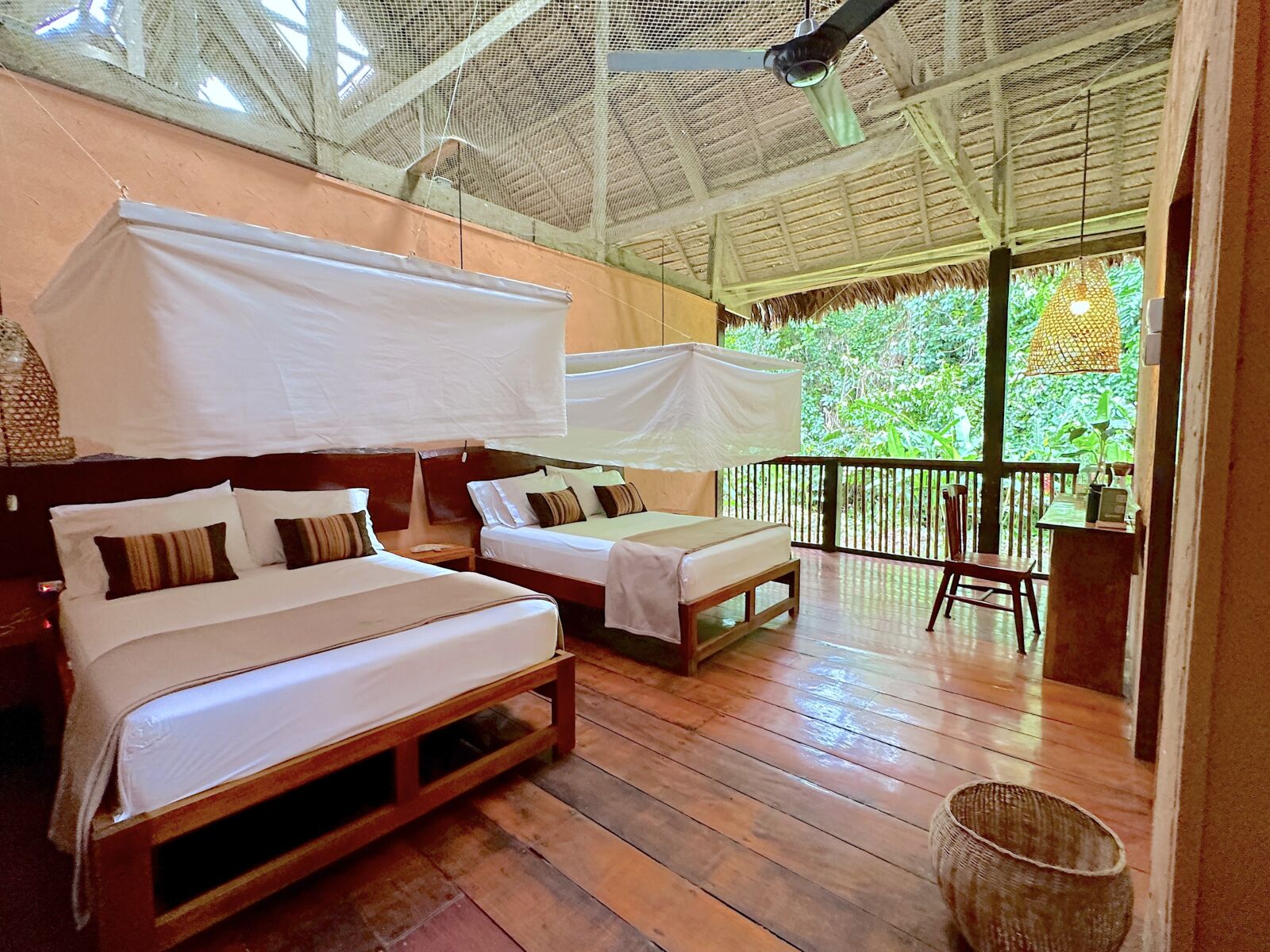
Posada Amazonas offers 30 eco-friendly rooms that provide guests with a comfortable experience while fully immersed in the rainforest atmosphere. (Jenn Smith Nelson photo for VacayNetwork.com)
Getting There: Located in southeastern Peru, in the Madre de Dios region, visitors travel from Lima to Puerto Maldonado, followed by a 1.5-hour road trip and a 1-hour boat ride along the Tambopata River to reach Posada Amazonas.
Get Involved: Conservation and adventure come together with Rainforest Expeditions. Each evening, Wired Amazon researchers host guest lectures, and participants can engage as citizen scientists with projects like setting up trail cameras, participating in aerobotany endeavors, aiding in jaguar identification, or searching for new species.



